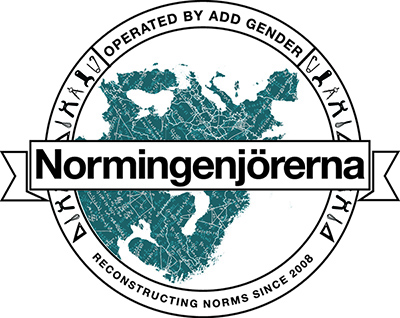When discussing gender equality in organizations we are often asked about the business case, what they, as an organization will benefit. They want to see numbers. The goofy side of me is often tempted to just answer: 42. But I restrain myself. There is no shortage of numbers to support the case for gender equality, increased ROI and ROE, more innovative groups, lower staff turnover and so on.
Of course, one could have hoped that doing right, ensuring equal opportunities for everyone and work against discrimination would a good enough reason to work for gender equality. But as entrepreneurs we understand why these questions are asked.
What I personally find harder to understand is the absence of numbers when starting gender equality and diversity work. Or strategies, organizations are in no real short supply of strategies overall, business strategies, marketing strategies, sales strategies, communications strategies, HR strategies and so on. But how many companies have a gender equality strategy? Company leaders talk about how important they find it gender equality and diversity, how high it is on their agenda and how they “stand behind it 110 percent.” But how often do we hear of a strategy to back it up?
Gender equality is not a matter of opinion rather it is based on hard facts. At Add Gender all of our work is bases on facts, research and tried methods. We see gender equality as a strategic advantage that should be treated as a part of the business strategy. A strategy usually consists of a plan and goal, which in other cases organizations are quite used to develop. So what makes it so hard when it comes to gender equality? One would think that a question regarded as “soft” would demand more hard boundaries to ensure it is being achieved. But all too often when we encounter organizations that struggle with gender equality they have no plan, no strategy, no time set goals that can be measured (not to confuse with our clients who, at least by now, know better).
Gender equality is not rocket science, but it is a question of knowledge and daring to challenge the “usual way” of doing things. There is so much from an organizations regular work that can be directly translated.
Set goals – they should have a deadline and be measurable. If they are not met, ask yourselves why? Would you ever accept losing a large account without any follow up?
- Make a plan – how will you achieve the goals that you decided on?
- Communicate – make sure that both internal and external stakeholders know about what you are going to do and how.
- Accountability – who is accountable for this happening and what are the consequences – of success as well as failure?
I am sure these are part of most organizations strategic work, so why leave something as important as gender equality to chance? In the words of the author of The Little Prince Antoine de Saint-Exupery “A goal without a plan is just a wish.”





